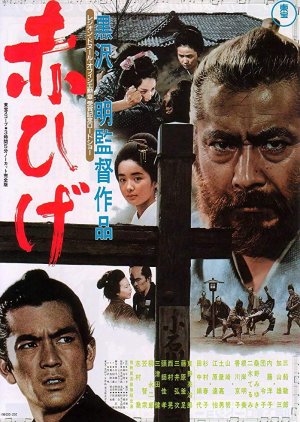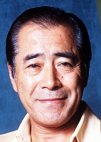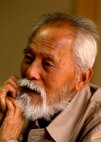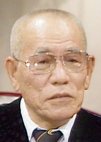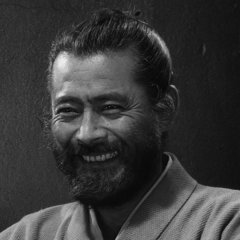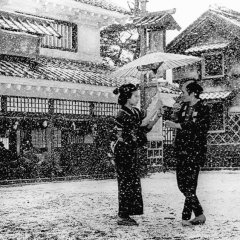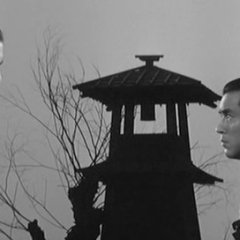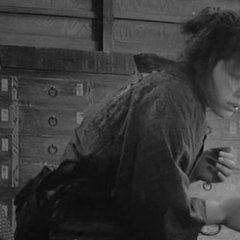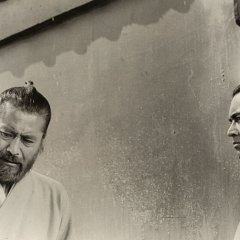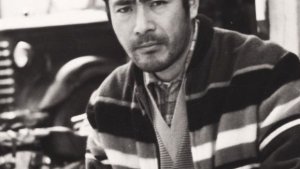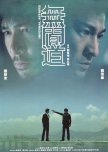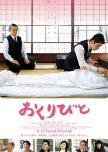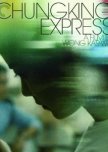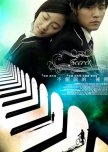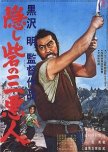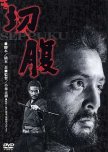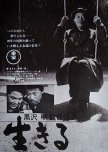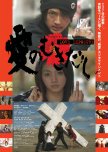 Ask MDL: Medical
Ask MDL: Medical In 19th century Japan, a rough tempered yet charitable town doctor trains a young intern. (Source: IMDb) Edit Translation
- English
- magyar / magyar nyelv
- dansk
- Norsk
- Native Title: 赤ひげ
- Also Known As: Akahige
- Screenwriter & Director: Kurosawa Akira
- Genres: Drama, Medical
Cast & Credits
- Mifune Toshiro Main Role
- Kayama Yuzo Main Role
- Ryu ChishuMr. YasumotoSupport Role
- Kagawa Kyoko"The Mantis" or "Madwoman"Support Role
- Yanagi EijiroMadwoman's fatherSupport Role
- Tono EijiroGoheijiSupport Role
Reviews

This review may contain spoilers
If you want to help yourself, help others first
Red Beard was the last film Kurosawa Akira and Mifune Toshiro made together. If it had to be the last one, it was a gentle and glorious way to end their partnership. This film seemed uncharacteristically hopeful and optimistic for a Kurosawa film. I found it to be heartwarming and heartrending.Dr. Noboru Yasumoto takes what he thinks is a tour of a backwater clinic run by a dictatorial doctor named Red Beard. In a cruel surprise he finds out that he has been assigned there by the magistrate and has no choice but to stay. A graduate of the Dutch school in Nagasaki, this smelly place filled with poor people is not worthy of his skills. He’s in the game to serve a Shogun, make money and live the easy life. In a quietly dramatic scene, he meets Red Beard aka Dr. Niide. It turns out Red Beard’s rules are for the benefit of the patients and staff in order to keep the clinic clean. He serves people who cannot pay in the afternoon and takes a personal interest in his patients. He believes the body and mind must be healed in order for a person to be cured.
Yasumoto arrogantly decides he will treat the homicidal patient locked up on the property nicknamed The Mantis. In a spectacularly filmed five-minute scene with no edits Yasumoto and The Mantis have a dangerous encounter that ends up altering his view of Red Beard. The older doctor doesn’t lecture, he begins to train the brash young doctor with experiences. He asks him to stay with an older man who is dying. Sitting with the man who is gasping for air, the young doctor can barely stay in the room as death becomes too real. When he’s relieved by one of the women he practically runs out only to be called to help Red Beard in a primitive surgery. A woman with a gash on her side and intestines hanging out is thrashing on the table. Yasumoto finds out he’s not as accomplished as he thinks he is and maybe Red Bed is more accomplished than he thought he was.
Through a series of vignettes focusing on various patients, Yasumoto begins to lose his arrogance. Instead of faceless, nameless people unworthy of his attention, they begin to have names and importance. The gruff Red Beard reveals himself to be flawed but also an exceptional man who cares for people. When the local government cuts the clinic’s funding, Red Beard increases the charges for the wealthy. When a young woman married to an abusive husband needs help, he has no problem blackmailing the local magistrate to help her though he does criticize himself for the unseemly action. And in a scene viewers were surely hoping for, he takes down a group of ruffians creating new patients while rescuing a child from a brothel. Red Beard is a genuinely good man yet like most Kurosawa heroes he’s also a rebel, lying outside the norm.
The last half of the film sees the complete transformation of Yasumoto when Red Beard puts him in charge of Otoyo, the young girl rescued from the brothel. In the process of healing her, he becomes sick and she takes over as his caregiver. And in the spirit of the film as she begins to receive kindness and trust, she passes that on to a small thief in need of it himself. The women who worked there went from distrusting Otoyo to protecting her and thrashing the Madame with daikons when the woman came to take Otoyo away. In one of the most moving scenes I’ve seen in any movie, as a boy is dying the women and Otoyo go to a well to call his spirit back by shouting his name into the well. It was haunting listening them to wail in hopes of saving the child and creatively shot by Kurosawa.
Though the movie is called Red Beard the story is about Yasumoto’s journey from self-centered, over-confident doctor to a humbled physician who sees the whole person regardless of their income. Otoyo became the heart of the film as she went from a tiny world where she couldn’t trust anyone to a larger complex world with people she could trust. Red Beard grounded the film with his wisdom and gravitas.
Near the end of the film, I was surprised to see Ryu Chishu make an appearance during a wedding scene. There were two domestic scenes in this film, something rare in a Kurosawa film unless he’s turning them on their head. Ryu made 52 films with Ozu, a director known for his domestic films. It was an odd, but satisfying cross-over.
As he usually did, Kurosawa made his hero suffer and face trials as he finds the courage to help others. In this film that meant small acts of kindness that blossomed into more, slowly changing the lives of others. Instead of trying to transform the political system, it was more about changing the people around them, healing them mind and body. Though the world outside was cruel and filled with suffering the clinic was an oasis of charity and good will. Yasumoto had Red Beard to be his master and show him the way. Yasumoto returned the favor by helping others.
The music was beautiful, heavily influenced by Brahms and Hadyn. Natural sounds and bells were often interspersed with the moving score. Kurosawa also used long wordless scenes layered in deep meaning. The actors expertly played their parts. Mifune portrayed the wise older doctor with a gentle flair. I did, however, enjoy him going into action mode, doctor style, even briefly. Kayama Yuzo took Yasumoto from an unlikeable petulant jerk to a compassionate and more open-minded adult. Niki Terumi as Otoyo showed a traumatized young girl and then one learning confidence in herself and others convincingly. Kurosawa also had some great shots, one I have to mention is when a female character walks out of a cloud of dust after an earthquake, devastation all around and in the distance a line of people scurrying away. Magnificent.
The only detractions for me were in the first half of the film, there were four perfidious women who caused some of the characters man pain. I’m often not a fan of Kurosawa’s view and portrayal of women. He did redeem himself some with Otoyo’s story and the women who worked at the clinic who often formed a sort of Greek chorus or cheerleading squad for the other characters.
Overall, this was an enjoyable film. Despite the cruelty humans caused one another, the people in the clinic reached out to heal. I laughed, I cried, I got angry, this movie took me on a three-hour ride that was over too quickly. This film was Kurosawa’s final hero film and Red Beard and Yasumoto were deserving heroes with which to end that era. Red Beard’s advice to help others in order to help yourself is still a worthwhile sentiment.
11/15/22
Was this review helpful to you?
Recommendations
There have been no recommendations submitted. Be the first and add one.

